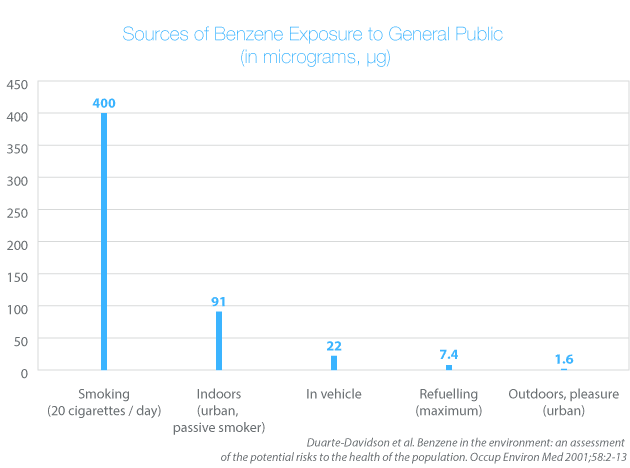Human health and the environment
People working in the aromatics industry have developed a wide range of measures to ensure that consumers and workers are not exposed to harmful levels of aromatics during use or transportation.
The risks of exposure during transportation – which takes place mainly via the sea or inland waterways – are very low and are controlled by international guidelines on safe handling of hazardous cargoes. Some 1.2 billion tonnes of chemicals are moved annually in Europe, accounting for 8% of all freight transported, and costing some EUR 40 billion a year – a high level of costs which confirms industry’s commitment to moving chemicals safely.
The aromatics industry is committed to managing any risks relating to its products: not only in the production phase but during their whole lifetime, from design to disposal.
Of the three main groups of aromatics, most concern has centred on the product benzene, which has indeed been classified as a human carcinogen by the International Agency for Research on Cancer (IARC). It is important to note, of course, that benzene itself is not a consumer product, but is used within the chemical industry to produce other chemicals.

Scientists across the world have conducted numerous and comprehensive studies on the effects of benzene exposure to both workers and the general public.
There are several sources of exposure to benzene for the general public. Many people are voluntarily exposed to benzene when they smoke cigarettes. Smoking 30 cigarettes produces about 1800 microgrammes of benzene, whilst passive smoking contributes about 50 microgrammes a day. Other sources include indoor and outdoor air (where benzene is created by city traffic, open fires and stoves), car refuelling and travelling in a vehicle. Benzene is also found naturally in foods such as fish or grilled meat.
From the table below, it will be seen that the overall daily dose of benzene for any individual is unique, since it depends on life-style. In rural areas, exposure is far lower than in cities. US studies have shown that the contributions to benzene intake from sources such as chemical manufacturing, drinking water, food, beverages and crude oil refining are minimal.

Benzene emissions
Although it remains impossible to totally eliminate benzene emissions from factories that make and use this chemical, the quantity of benzene emitted into the air is negligible, and represents less than 6% of all benzene emissions. Indeed, since 1995, the level of benzene emissions in Europe has been reduced by 50% as a result of investments in new abatement technologies such as strict air monitoring programmes at production sites, nitrogen blanketing of storage tanks, and installation of vapour recovery systems.
The substantial improvements made by industry in recent years have also contributed to significant reductions in emissions of benzene into water from production plants. This factor, coupled with the increased efficiency of the wastewater treatment units and the ready biodegradability of benzene itself, has led to a drastic reduction of benzene emissions in effluents.
In addition, tests carried out following the OECD (the Organisation for Economic Co-operation and Development) testing methods have confirmed the biodegradability of benzene.
The general public is usually not exposed to benzene, except for extremely minute amounts from variety of sources, such as city traffic, open fires, smoking and car refuelling.
